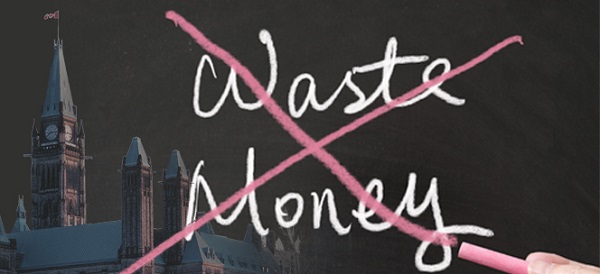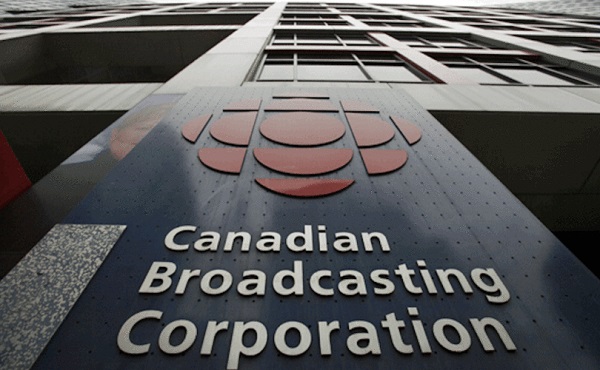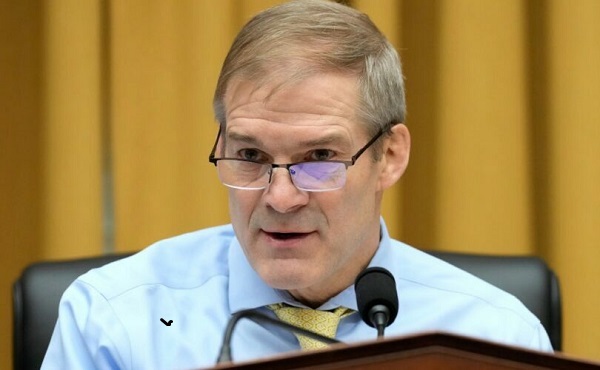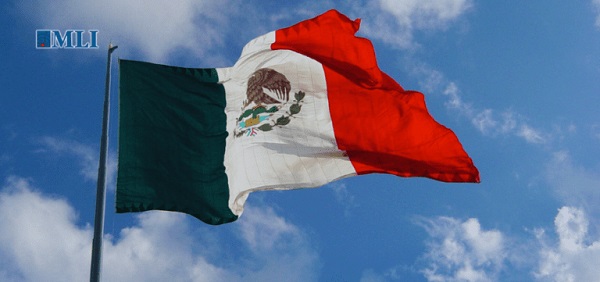Business
INDIGENOUS PARTICIPATION IS IMPORTANT TO THE CANADIAN WIND ENERGY INDUSTRY, WITH OVER 35 COMMUNITIES ALREADY BENEFITTING FROM WIND PROJECTS

INDIGENOUS PARTICIPATION IS IMPORTANT TO THE CANADIAN WIND ENERGY INDUSTRY, WITH OVER 35 COMMUNITIES ALREADY BENEFITTING FROM WIND PROJECTS

This article was written in 2019, prior to the July 1, 2020, creation of the Canadian Renewable Energy Association, which joined CanWEA with the Canadian Solar Industries Association.
Canada’s wind energy industry has been involved with and benefited over 35 Indigenous communities in the country. As the voice of the industry, the Canadian Wind Energy Association (CanWEA) has been a supporter of Indigenous participation in Canadian wind projects. One of the ways that CanWEA has been active is by being a “Clean Energy Collaborator” with the innovative 20/20 Catalysts Program, which supports clean energy development in Indigenous communities. An example of this collaboration has included working with Catalysts like Chantelle Cardinal (2018 cohort) on convening Indigenous leaders at CanWEA events to enable meaningful discussions about the obstacles and opportunities for Indigenous involvement in wind energy projects. This collaboration is important, since “many of Alberta’s Indigenous communities are focused on opportunities to participate in the clean energy development occurring in their Traditional Territory and to creating opportunity on Reserve and on Settlement lands,” as Ms. Cardinal told CanWEA’s 2019 Spring Forum in Banff, Alberta. In recognition of the effectiveness of the 20/20 Catalysts Program, CanWEA honoured the program with its 2018 Group Leadership Award, which recognizes visionary leaders and clean energy pioneers for their outstanding contribution to the Canadian wind industry.
Canada’s wind energy industry has been involved with and benefited over 35 Indigenous communities in the country.
As the voice of the industry, the Canadian Wind Energy Association (CanWEA) has been a supporter of Indigenous participation in Canadian wind projects. One of the ways that CanWEA has been active is by being a “Clean Energy Collaborator” with the innovative 20/20 Catalysts Program, which supports clean energy development in Indigenous communities.
Chantelle Cardinal, a Saddle Lake Band member from Whitefish Lake #128 and a Catalyst from the 2018 cohort, is one of the Catalysts with whom CanWEA has been working on convening Indigenous leaders at CanWEA events to enable meaningful discussions about the obstacles and opportunities for Indigenous involvement in wind energy projects in Alberta. She has been working with First Nations in Alberta for over 14 years and is currently the Director of Business Development & Environment for the G4 (Stoney Nakoda-Tsuut’ina Tribal Council).
Effective Indigenous and public engagement are cornerstones for successful wind energy development. CanWEA has developed Best Practices for Indigenous and Public Engagement to help industry members consult, engage and communicate on wind energy developments.
“Many of Alberta’s Indigenous communities are focused on opportunities to participate in the clean energy development occurring in their Traditional Territory and to creating opportunity on Reserve and on Settlement lands,” Ms. Cardinal told CanWEA’s 2019 Spring Forum in Banff, Alberta. “Wind energy projects across Canada have demonstrated exemplary, mutually-beneficial partnerships with Indigenous peoples. From community involvement and investment, to contracts and long-term employment, these partnerships are blazing a new trail for how to facilitate collaborative Indigenous engagement and access this country’s vast renewable resources.”
At the Spring Forum, she led an Indigenous panel discussion on the strengths, benefits and lessons from Indigenous participation in wind energy developments. A key point was that clean energy projects can contribute to energy and economic sovereignty for Indigenous communities.
In recognition of its successes, CanWEA awarded the 20/20 Catalysts Program with its 2018 Group Leadership Award, which recognizes visionary leaders and clean energy pioneers for their outstanding contribution to the Canadian wind industry. (This story was written in 2019, prior to the creation of Canadian Renewable Energy Association).
Thanks to Todayville for helping us bring our members’ stories of collaboration and innovation to the public.
Click to read a foreward from JP Gladu, Chief Development and Relations Officer, Steel River Group; Former President and CEO, Canadian Council for Aboriginal Business.

JP Gladu, Chief Development and Relations Officer, Steel River Group; Former President & CEO, Canadian Council for Aboriginal Business
Click to read comments about this series from Jacob Irving, President of the Energy Council of Canada.

Jacob Irving, President of Energy Council of Canada
The Canadian Energy Compendium is an annual initiative by the Energy Council of Canada to provide an opportunity for cross-sectoral collaboration and discussion on current topics in Canada’s energy sector. The 2020 Canadian Energy Compendium: Innovations in Energy Efficiency is due to be released November 2020.
Click below to read more stories from Energy Council of Canada’s Compendium series.
INDUSTRY-INDIGENOUS RELATIONS: A TREND TOWARD DEEPER ENGAGEMENT
Business
UN climate conference—it’s all about money

From the Fraser Institute
This year’s COP wants to fast-track the world’s transition to “clean” energy, help vulnerable communities adapt to climate change, work on “mobilizing inclusivity” (whatever that means) and “delivering on climate finance,” which is shorthand for having wealthier developed countries such as Canada transfer massive amounts of wealth to developing countries.
Every year, the United Nations convenes a Conferences of Parties to set the world’s agenda to reduce greenhouse gas (GHG) emissions. It’s the biggest event of the year for the climate industry. This year’s conference (COP29), which ends on Sunday, drew an army of government officials, NGOs, celebrities and journalists (many flying on GHG-emitting jet aircraft) to Baku, Azerbaijan.
The COP follows a similar narrative every year. It opens with a set of ambitious goals for climate policies, followed by days of negotiating as countries jockey to carve out agreements that most favour their goals. In the last two days, they invariably reach a sticking point when it appears the countries might fail to reach agreement. But they burn some midnight oil, some charismatic actors intervene (in the past, this included people such as Al Gore), and with great drama, an agreement is struck in time for the most important event of the year, flying off to their protracted winter holidays.
This year’s COP wants to fast-track the world’s transition to “clean” energy, help vulnerable communities adapt to climate change, work on “mobilizing inclusivity” (whatever that means) and “delivering on climate finance,” which is shorthand for having wealthier developed countries such as Canada transfer massive amounts of wealth to developing countries.
Some of these agenda items are actually improvements over previous COPs. For example, they’re actually talking about “climate adaptation”—the unwanted stepchild of climate policies—more this year. But as usual, money remains a number one priority. As reported in the Associated Press, “negotiators are working on a new amount of cash for developing nations to transition to clean energy, adapt to climate change and deal with weather disasters. It’ll replace the current goal of $100 billion (USD) annually—a goal set in 2009.” Moreover, “experts” claim the world needs between $1 trillion and $1.3 trillion (yes, trillion) in “climate finance” annually. Not to be outdone, according to an article in the Euro News, other experts want $9 trillion per year by 2030. Clearly, the global edifice that is climate change activism is all about the money.
Reportedly, COP29 is in its final section of the meta-narrative, with much shouting over getting to a final agreement. One headline in Voice of America reads “Slow progress on climate finance fuels anger as COP29 winds down.” And Argus News says “climate finance talks to halt, parties fail to cut options.” We only await the flying in of this year’s crop of climate megafauna to seal the deal.
This year’s conference in Baku shows more clearly than ever before that the real goal of the global climate cognoscenti is a giant wealth transfer from developed to developing countries. Previous climate conferences, whatever their faults, focused more on setting emission reduction targets and timelines and less about how the UN can extract more money from developed countries. The final conflict of COP29 isn’t about advancing clean energy targets or helping vulnerable countries adapt to climate change technologically, it’s all about show me the money.
Author:
Business
Canada’s department of government efficiency: A blueprint

From the Canadian Taxpayers Federation
Average compensation for a federal bureaucrat is $125,300. Cutting back the bureaucracy to population growth would save taxpayers $9 billion every year
Dumb government spending doesn’t stop at the 49th parallel.
U.S. President-elect Donald Trump announced the creation of a Department of Government Efficiency, with a mandate to “dismantle government bureaucracy, slash excess regulations, cut wasteful expenditures, and restructure federal agencies.”
Those marching orders sure would sound good in a prime minister’s mandate letter to a finance minister. And here’s the blueprint they should follow.
Begin with crazy research Canadian taxpayers are forced to subsidize.
The Social Sciences and Humanities Research Council spends $1 billion a year supporting “research and research training in the social sciences and humanities.”
Here’s a little taste of the reports it funds with your tax dollars:
- Gender Politics in Peruvian Rock Music ($20,000)
- Cart-ography: tracking the birth, life and death of an urban grocery cart, from work product to work tool ($105,000)
- My Paw in Yours: Dead Pets and Transcendence of Species Divides in Experimental Art-Making Practice ($17,500)
- Playing for Pleasure: The Affective Experience of Sexual and Erotic Video Games ($50,000)
And that’s just the tip of the iceberg.
Parks Canada put Mr. Magoo in charge of its hunting operations. It spent four years and $10,000 capturing a single bullfrog and dropped $800,000 hunting 84 deer on a B.C. Island. How can a simple hunt cost $10,000 per deer?
Well, hunting gets more expensive when instead of your grandpa’s old rifle, you use prohibited semi-automatic weapons, instead of a box of shells, you get a crate of ammo, and instead of your buddy’s old pickup, you rent a helicopter for $67,000.
Or how about the $8-million barn at Rideau Hall. Or $12,500 live senior citizen sex story shows. Or the $8,800 sex toy show in Germany. Or the millions wasted producing government podcasts no one listens to.
Then there’s government officials living high on the hog.
Governor General Mary Simon spent $71,000 on limo services in Iceland. Bureaucrats spend $76,000 a month renting art. Global Affairs Canada spends $51,000 on booze a month.
Now, the big stuff.
The size and cost of the government is out of control. Prime Minister Justin Trudeau hired 108,000 new bureaucrats. That’s a 42 per cent increase in less than a decade.
Had the bureaucracy only increased with population growth, there would be 72,491 fewer bureaucrats today.
Average compensation for a federal bureaucrat is $125,300. Cutting back the bureaucracy to population growth would save taxpayers $9 billion every year.
It’s time to stop rewarding failure with bonuses.
The feds dished out $1.5 billion in bonuses since 2015.
And the bonuses flow despite federal departments only managing to hit half of their performance targets once in the past five years.
Government executives overseeing ArriveSCAM took $340,000 in bonuses.
The Canada Mortgage and Housing Corporation rubberstamped $102 million in bonuses amid the worst housing crisis in Canadian history.
The Bank of Canada printed $20 million in bonus cheques in 2022, as inflation reached a 40-year high.
The CBC dished out $132 million in bonuses since 2015.
The next thing on the chopping block? Corporate welfare.
Trudeau put taxpayers on the hook for $30 billion in subsidies to multinational corporations like Honda,Volkswagen, Stellantis and Northvolt.
Federal corporate subsidies totalled $11.2 billion in 2022 alone.
Shutting down the federal government’s seven regional development agencies would save taxpayers an estimated $1.5 billion annually.
True efficiency would also mean eliminating failing government operations altogether. The feds should sell any Crown corporation that can, or should, be left to the private sector.
Here are a few examples.
The CBC, which takes more than $1 billion from taxpayers annually.
Canada Post, which lost $1.2 billion in the last two years and forecasts “larger, unsustainable losses in future years.”
VIA Rail, took $1.8 billion in taxpayer cash during the past five years just to cover operating losses.
The bad news for taxpayers is we pay too much tax because the government wastes too money. The list of wasteful spending in this article is far from exhaustive.
Other examples include the multi-billion dollar gun confiscation that police officers say won’t work, the $25-billion equalization scheme and taxpayer-funded media bailouts, among others.
The good news is a champion of taxpayers could make massive cuts and barely anyone outside the Ottawa bubble would notice.
This is the blueprint to slash Ottawa’s wasteful, bloated bureaucracy. All we need now is a prime minister with the guts to pick up the scissors.
-

 Business2 days ago
Business2 days agoCBC’s business model is trapped in a very dark place
-

 Censorship Industrial Complex2 days ago
Censorship Industrial Complex2 days agoCongressional investigation into authors of ‘Disinformation Dozen’ intensifies
-

 Alberta2 days ago
Alberta2 days agoAlberta government announces review of Trudeau’s euthanasia regime
-

 Alberta1 day ago
Alberta1 day agoAlberta fiscal update: second quarter is outstanding, challenges ahead
-

 Business1 day ago
Business1 day agoTrump’s government efficiency department plans to cut $500 Billion in unauthorized expenditures, including funding for Planned Parenthood
-

 Brownstone Institute17 hours ago
Brownstone Institute17 hours agoFirst Amendment Blues
-

 Crime1 day ago
Crime1 day agoMexican cartels are a direct threat to Canada’s public safety, and the future of North American trade
-

 Bruce Dowbiggin2 days ago
Bruce Dowbiggin2 days agoThe Pathetic, Predictable Demise of Echo Journalism






